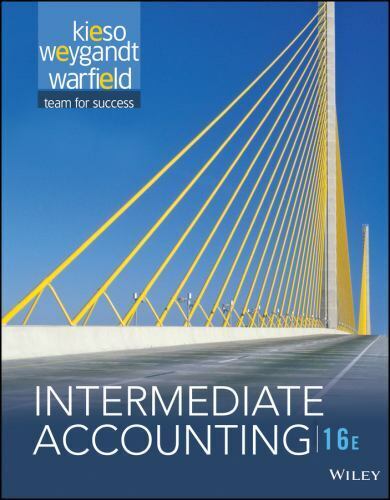(L02,3,4) (SCFIndirect Method, and Net Cash Flow from Operating Activities, Direct Method) Comparative balance sheet accounts of...
Question:
(L02,3,4) (SCF—Indirect Method, and Net Cash Flow from Operating Activities, Direct Method) Comparative balance sheet accounts of Marcus Inc. are presented below.
MARCUS INC.
COMPARATIVE BALANCE SHEET ACCOUNTS AS OF DECEMBER 31, 2017 AND 2016 December 31 Debit Accounts 2017 2016 Cash $ 42,000 $ 33,750 Accounts Receivable 70,500 60,000 Inventory 30,000 24,000 Equity investments 22,250 38,500 Machinery 30,000 18,750 Buildings 67,500 56,250 Land 7,500 7,500 $269,750 $238,750 Credit Accounts Allowance for Doubtful Accounts $ 2,250 $ 1,500 Accumulated Depreciation—Machinery 5,625 2,250 Accumulated Depreciation—Buildings 13,500 9,000 Accounts Payable 35,000 24,750 Accrued Payables 3,375 2,625 Long-Term Notes Payable 21,000 31,000 Common Stock, no-par 150,000 125,000 Retained Earnings 39,000 42,625 $269,750 $238,750 Additional data (ignoring taxes):
1. Net income for the year was $42,500.
2. Cash dividends declared and paid during the year were $21,125.
3. A 20% stock dividend was declared during the year. $25,000 of retained earnings was capitalized.
4. Equity investments (level of ownership is less than 20%) that cost $25,000 were sold during the year for $28,750. No unrealized gains and losses were recorded on these investments in 2017.
5. Machinery that cost $3,750, on which $750 of depreciation had accumulated, was sold for $2,200.
Marcus’s 2017 income statement follows (ignoring taxes).
Sales revenue $540,000 Less: Cost of goods sold 380,000 Gross margin 160,000 Less: Operating expenses (includes $8,625 depreciation and $5,400 bad debts) 120,450 Income from operations 39,550 Other: Gain on sale of investments $3,750 Loss on sale of machinery (800) 2,950 Net income $ 42,500 Instructions
(a) Compute net cash flow from operating activities using the direct method.
(b) Prepare a statement of cash flows using the indirect method.
Step by Step Answer:







